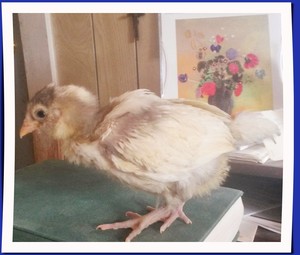01 May Sun 2016
Turning the eggs, manually
When we did not have an automatic egg turner, I turned the eggs twice a day. It’s a tough job so I picked a 12 hour interval i knew I would be awake. For me that was 10 am and 10 pm and so it wasn’t so bad.
Eggs undergoing incubation should be thoroly but carefully turned or shuffled at least twice daily from the second to the nineteenth day of incubation. Recent experiments have shown that it is not only desirable that the eggs be turned thruout the incubation period but very necessary that they be thoroly shuffled during the first ten or twelve days, in order that a high percentage of chicks dead in the shell be avoided.
I did do that too…shuffle them around, rolling them all over the Styrofoam making sure that the X’s were hidden 10 pm and visible at 10 am.
Eggs must be turned twice daily from the second to the nineteenth day of incubation with the early part of the incubation period is more vital than the latter part so far as the incubation factor of turning is concerned.
Whenever turning or certain amounts of turning are omitted the chicks that hatch are not as strong, do not fluff as well, and are more likely to have absorbed incompletely the remaining yolk on the nineteenth day.
Whenever turning or certain amounts of turning are omitted, there is a higher than normal loss of embryos as well the dreaded ” dead-in-shells “. Since I raise Araucanas, I am not looking to increase those odds.
The hen rotates her eggs about 180 times a day, moving and getting things settled, remember as her body, without feathers, is directly on the eggs, she can feels their movements and know when adjustments are needed. But why is turning the eggs during incubation so vital ? Well here are two reasons that have the most credence
- The yolk being lighter than the surrounding albumen it tends to rise, and, & unless the position of the egg is changed frequently, it will in time come in contact with the shell membranes.
- If allowed to remain in contact the germ is said to dry fast and finally die;
- Another idea is what is called exercise and its relation to nutrition and vitality.
- Here the prevalent thought is that “the embryo did not die from adhering to the shell membranes in the early part of the incubation period but rather lived until hatching time” and the movement deterred that.

